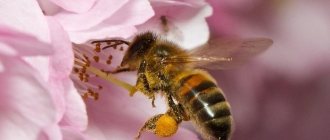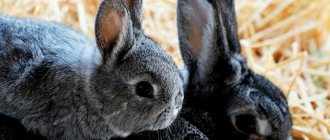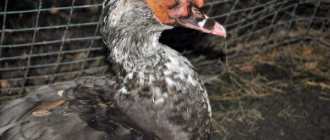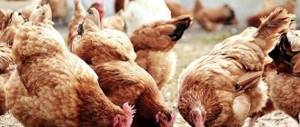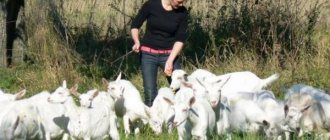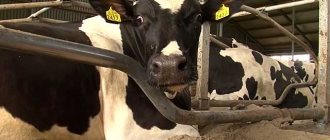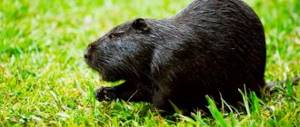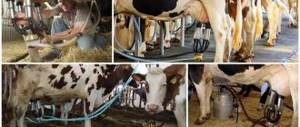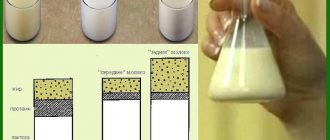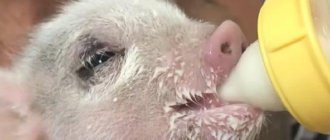The goat was first domesticated in the Middle East about 9 thousand years ago. It is kept for its dairy and meat products, as well as wool and fluff. Before getting a goat, it is important to decide on the choice of breed. This will determine the average life expectancy of the animal. Let's look at how long domestic goats can live, which affects their life expectancy.
Life statistics of different breeds
Goats, due to breeding in different conditions, differ markedly from each other in some ways. The lifespan of an animal mainly depends on human decisions. It is different for each breed and depends on many factors.
Meat
All varieties of breeds are characterized by a massive, strong, barrel-shaped body, strong bones, and strong, strong legs. They have a small udder designed for fattening their offspring. Individuals quickly gain body weight.
Meat has healing properties and is useful for stomach diseases. It is characterized by low calorie content, exquisite, delicate taste, and contains a large number of microelements.
The lifespan of animals can range from 8 to 12 years. At home they can live up to 15 years. A breeding goat has a lifespan of 5 to 6 years.
When raising an animal for meat, the life period is reduced to the time of slaughter (1.5-2 years). When fattening for more than two years, metabolism is disrupted, liver problems arise, and carcinogenic substances accumulate in the meat.
When raising young animals for meat, they are kept until the age of 6-8 months.
Dairy
These animals have a long body and a wide chest. The body is angular due to the lack of subcutaneous fat, the back is straight, not sagging. Individuals have strong, straight legs. The udder is pear-shaped, but it is elastic and warm.
The nipples are of medium length. Fertility is high. Individuals are distinguished by good milk production and extended lactation.
There are two types of milk: with a specific odor and odorless. The most valuable thing about goat milk is that it has antibacterial properties and improves blood composition. It is also useful for use by frequently ill children and the elderly.
The lifespan of domestic dairy breeds is slightly higher. A long lactation period and the high value of milk are of great importance for a private farmstead.
The average lifespan of domestic goats is 16-18 years while maintaining good milk lactation. The domestic breeding goat lives shorter: the time of physiological activity reaches its peak at 4-6 years.
When kept in a zoo, they can live up to 19 years, and in the wild, in the absence of vitamin and mineral support, no more than 10 years.
Mini goats
This is an exotic subspecies of goats. Weight reaches 25-30 kg, height – up to 50 cm, body length – 60-70 cm. They have a small body and accelerated metabolism. They are divided into dairy and meat.
Slags and carcinogens do not settle in milk. Individuals are unpretentious, hardy, and have good adaptability. Also, such animals are not afraid of humidity and tolerate heat and cold well.
Their lifespan ranges from 22 to 25 years. In the wild, they graze on trees, eating their leaves. Friendly, easy to keep, unpretentious.
Pets can live up to 20-25 years.
Types of sheep products
The coat has good protective qualities and protects the animal's body from summer overheating and winter hypothermia. Wool is in constant interaction with the body and its condition directly depends on the general state of health.
The protein in this meat is no less than in the more common beef and pork, but the special value of lamb is its very low cholesterol content in fat. For comparison, 100 grams of pork fat contains from 74.5 to 126 milligrams of cholesterol, beef fat contains 75 milligrams, and lamb fat contains only 29 milligrams. A biological feature of adults is the accumulation of fat. It is deposited under the skin (in muscle and connective tissues), and in the abdominal cavity of the animal (near the kidneys, in the omentum and mesentery).
This allows us to conclude that these animals use feed most fully in the first year of their development, therefore it is during this period of time that their meat has the highest quality characteristics.
Experts have determined that by the age of seven months, a sheep gains about half the live weight characteristic of an adult, while fattening adult animals mainly leads to an increase in the amount of fat. This explains the fact that to obtain a weight gain of one kilogram, from 5 to 6 feed units are spent on young animals, and from 10 to 12 for the same amount of weight gain on an adult animal.
To make one kilogram of soft sheep cheese, it takes from 4.5 to 5 kilograms of raw milk, and from 6 to 7 kilograms per kilo of hard cheese. Sheep milk contains from 18 to 20 percent solids. If we compare sheep and cow's milk, the first has a higher content of protein, fat, and dry matter, as a result of which it is perfectly absorbed by our body.
Milk productivity depends on the breed and can vary significantly. For example, Askanian, Kuibyshev and Tsigai ewes produce on average from 130 to 150 kilograms of raw milk per lactation period, and females of the Mazekh and Karakul breeds produce only 100-110 kilograms.
Sheep farming as a branch of livestock farming acts as the main supplier of raw materials for the fur and fur industries. Fur coats and fur
The sources of sheepskin of the fur type are sheep of the fine-fleece and semi-fine-fleece varieties, as well as from some species of semi-coarse-wooled animals, in cases where the basis of their wool is made up of downy fibers with a low content of fine awn.
Based on the length of the fibers, sheepskin furs are divided into the following types:
- wool (fiber length more than 3 centimeters);
- half-wool (from one to three centimeters)
- short-haired (from 0.5 to one centimeter).
Sheepskins of the fur coat type are steppe, Romanov and Russian.
The sources of steppe sheepskin are Karakul and meat-fat (fat tail) animals. The structure of their coat is represented by fluff interspersed with dead and dry hair, and coarse hair. Such sheepskins are characterized by heavy weight and poor heat conservation.
Some of the best fur sheepskins are Romanov sheepskins. Their spine is shorter than the down, so the six does not fall off. The down should be no more than one and a half to two centimeters longer than the spine, otherwise the down will become felted. The optimal proportions of hair and down are considered to be from 1 to 4 to 1 to 10. The wool density should be from 30 to 40 fibers per square millimeter. In addition, Romanov sheepskin, having good strength, is distinguished by its lightness: one square meter weighs 1.45 kilograms. For comparison, for other coarse-wool sheepskins this figure ranges from 1.95 kilograms or more.
Suppliers of Russian sheepskin can be any coarse wool sheep, with the exception of Romanov, Karakul and fat tail sheep.
If sheepskin is not suitable for use in the fur and fur industry, they are called tanneries. They are used as raw materials for the production of shoe suede, chevro, chrome leather, as well as haberdashery and lining leather and other materials.
Sheepskin is best removed from young animals eight to ten months of age.
This valuable raw material belongs to the types of fur and is used in the production of coats, collars, hats and other types of products.
Most of the marketable smushkas come from Karakul lambs. It is Karakul smushki that are the most valuable and are in great demand both in the domestic and foreign markets.
READ ALSO: Table form of pink grapes of amateur selection
Climate influence
Now there are specially bred breeds for northern latitudes and climatic conditions of the middle zone. The lifespan of such animals can reach up to 15 years. However, in the southern regions it is reduced to 10 years. The logical conclusion follows from this that it is not always justified to buy rare breeds.
Sometimes the best solution is to purchase a local goat, but its productivity and service life will be many times higher.
How many years do domestic goats live? The lifespan of a male depends on the same factors as females.
Male goats live as long as females
Average lifespan of regular goats
To begin with, it is worth noting that the average lifespan of goats is from 12 to 15 years. For their wild counterparts, this figure is much less - no more than 10 years. However, you should not think that all goats live that long. After all, there are many nuances here that affect the average life expectancy, both positively and negatively.
So it’s not a bad idea to study all these factors.
How long do goats live?
Domestic animals such as goats are raised for milk, meat and wool. Life expectancy depends mainly on diet and living conditions. Proper feeding affects the digestive system, as well as the condition of the teeth. Healthy animals live longer than sick ones. On average, life expectancy is 15-18 years.
Meat
Oriental beef breeds (Boer, Nubian) come from southern Asia and are adapted to life in warm climates. In temperate latitudes their lifespan is 8-10 years. True, no one keeps representatives of the meat breed until this age. They are usually sent to slaughter at 8-12 months. The meat of these animals becomes tougher with age.
It is also advisable to renew breeding goats after 7-8 years of life. And in females, reproductive functions decrease with age. At the age of 8, old goats have miscarriages and non-viable or dead kids are born.
Dairy
Dairy goats, as a rule, begin to milk after the first lambing, that is, at the age of 2 years. Peak productivity occurs at 4-5 years. Then milk yield gradually decreases. It is advisable to keep dairy goats for up to 8-10 years. It could be longer. With good care and proper nutrition, these animals will live up to 15-18 years. True, old goats will give a cup of milk a day.
Mini goats
Decorative dwarf goats (Nigerian, Cameroonian) belong to dairy breeds. Such animals can live up to 20 years. These long-livers have excellent immunity and good adaptive qualities. True, the period of their economic use is no more than 10 years.
When does a goat produce milk?
Some breeders are confident that having bought a young goat, they will immediately begin to receive milk from it. However, the animal begins to produce milk only after the first pregnancy. It is intended for feeding kids, but a dairy goat produces so much milk per day that it is enough for both a newborn and for personal use.
The goat will give milk only after lambing
About a few days before lambing, the animal’s udder becomes elastic and full. But before lambing, the goat cannot be milked; you can only wash it and massage it a little to improve blood supply. After lambing, the young mother produces milk for 6-7 months, sometimes 9, but the quality, fat content and quantity in the last months will be low. After 6-9 months, the milk disappears and in order to get it again, the goat must again bear a kid.
What can reduce life expectancy
To determine how many years goats live at home, you need to first learn about negative factors.
One of the most common reasons why a goat's lifespan is shortened is high humidity. Yes, these animals are better adapted to dry climates, so high humidity can lead to diseases that will shorten the life of your animals by several years.
In general, goats can tolerate frosts quite easily, but still those who are forced to live at low temperatures also show worse life expectancy than those who live far from the harsh climate of our country.
Finally, proper nutrition is a very important factor. The lack of minerals and trace elements quite often leads to the fact that some farms cannot keep animals for longer than 5-8 years.
Fortunately, this figure can be significantly increased if you handle goats with the utmost care and seriously take care of them.
Goat's milk is gaining popularity
It is very important to know how many liters of milk a goat produces per day, as this directly affects the profitability of production. But who needs the products? It is believed that people traditionally consume milk from cows. However, this is a misconception. Goat milk is gaining popularity among consumers today. There is a significant shortage of demand for such products.
This happens for the following reasons:
- Goat's milk is better absorbed than cow's milk. It has smaller globules and a high content of short-chain fatty acids, which are easily broken down in the body.
- It contains a high content of vitamins A, D, B, B12, minerals (calcium, phosphorus, magnesium, iodine, zinc), proteins.
- Goats are more difficult to keep and their production is smaller. Therefore, real goat milk is difficult to find. There are many dairy cow farms, and goats are kept mainly on private farmsteads.
( 1 rating, average 4 out of 5 )
Breeding and reproduction
Although goats are ready for fertilization at 8-10 months, it is recommended to cover them after reaching one year of age. Almost every female brings 2 kids (80%), in rare cases – 3-5. Kids of the Saanen goat breed are born with a weight of 3-4.5 kg (goats, accordingly, are larger than female goats), and grow very rapidly. Goat kids are fed whole milk for up to six months. The main thing in goat breeding is choosing a good male.
Important! For 50 females, one fertile goat is enough, which is raised in good conditions, providing it with better feeding and maintenance.
Mating is carried out during hunting (the onset of which is signaled by changed behavior and swelling, redness of the external genital organs). The hunting period is 24-48 hours, the second hunt occurs after 18-22 days, in rare cases - after 5-9 days. Insemination – within 30-40 days.
Breeding and reproduction
Approximately 45 days before the expected lambing, goats are allowed to dry out so that further milk production does not decrease. The goat is introduced into dry wood gradually, daily reducing the amount of feed and reducing the frequency of meals.
The gestation period of a goat is about 150 days. Goats give birth on their own, in most cases without complications. In rare situations, the help of a veterinarian may be required (afterbirth does not pass, weak kids).
Attention! It is recommended to plan lambing for the summer period, since, starting from two weeks of age, kids begin to taste young, juicy grass - necessary for full growth and development.
For newly born goats, the nose and mouth are cleared of mucus using a clean cloth, the umbilical cord is tied with a thread, 2-3 cm away from the belly, and the umbilical cord is cut with disinfected scissors no closer than 7-9 cm from the belly. The tip of the umbilical cord is lubricated with iodine and the kid is given to the uterus.
Before feeding the kids for the first time, you need to prepare the goat:
- trim the hair around the udder;
- wash the udder and nipples thoroughly with warm water;
- The first 3-4 streams of milk are expressed and the kids are allowed to approach the udder.
In Saanen goats, the maternal instinct is not sufficiently developed; it is unsafe for the kids to remain with other animals; it would be advisable to separate them into a prepared cage for several days. During lactation, the goat should be fed more nutritious, varied foods.
For good fertility of animals, you need to know all the nuances of keeping, feeding and description of the Saanen goat breed, otherwise you can forget about decent milk yield. With proper care, the animal will become not only a good source of milk, but also a concentration of tasty juicy meat. By the way, another plus for the Saanen piggy bank is that goats have practically no specific smell, unlike their relatives.
Features of cultivation
The light weight of goats (from 40 to 50 kg) makes keeping them profitable for the farmer. In addition, animals, thanks to their extended front teeth, can graze in areas where grass has grown only 3-5 cm. Cows, for comparison, do not graze plants smaller than 10 cm. Goats can feed on almost any vegetation, which makes their breeding simple and accessible. If there is a shortage of hay and fresh grass, the animal will not refuse tree leaves (aspen, birch, willow, acacia), root vegetables, carrot tops, burdocks, and grain.
See also
When can you start drinking milk after lambing a goat, the benefits and value of colostrumRead
When a goat has given birth, it is better to immediately decide which kids will be raised for meat. Males are castrated; females do not require this procedure. Castrati meat is tender, does not have an unpleasant odor, is juicy and rich in microelements.
After birth, for the first 3-4 weeks, goat kids are given plenty of mother's milk. Then gradually grain, whey, hay and plants are introduced into the diet. Experienced farmers advise feeding young animals with bran to quickly gain weight. Starting from 3 months, goats are left with hay at night so that they do not get hungry.
In addition, animals must have 24/7 access to clean drinking water. If the livestock lives in a building, then daily cleaning and replacement of bedding is necessary.
From 4-5 months you can introduce grain into the diet: barley, oats, crushed corn. This will give the meat fat. If kids consume liquid food, whey or mash, it should be given warm. It is recommended to add a little salt to the feed once a week to stimulate the appetite of young animals.
Nutrition plan for fattening meat goats based on the amount of product per day:
| Type of feed | 4-8 months | 9-13 months | 13-10 months |
| Serum | 1.1 l | 1.6 l | 2.0 l |
| Corn | 0.16 kg | 0.5 kg | 0.35 kg |
| Hay | 0.6 kg | 2 kg | 1.1 kg |
| Grass | 2.85 kg | – | 3.6 kg |
Goat meat is considered a dietary product, despite its sufficient fat content. It is recommended for people with excess weight and diseases of the cardiovascular system.
How to raise a centenarian
Despite the fact that goats are unpretentious animals, you need to take care of some points.
- Proper nutritious diet. Yes, horned animals are not picky about food and can even eat food that is unsuitable for other livestock, for example, branches, tree leaves, and leftovers from the master’s table. However, taking care of proper nutrition will increase the period of productivity and provide healthy milk.
- Visit your veterinarian regularly. Preventive measures and vaccination will reduce the risk of infectious diseases, which means that animals will be able to remain healthy and productive longer.
- Carry out anti-parasitic measures. Parasites greatly undermine the health of livestock and cause them a lot of discomfort. In addition, there is a risk of human infection.
- Make sure you have a properly planned stall space with sufficient space.
- Brush wool and downy breeds regularly.
Regular visits to the veterinarian have a positive effect on the lifespan of goats
Factors influencing life expectancy
Climate
When purchasing animals from distant regions with completely different climatic conditions, goats do not always show their productive qualities, since in new weather conditions it takes time to adapt to an unfamiliar habitat. In goats, productivity and immunity may decrease. Stressful conditions lead to loss of appetite, which leads to the risk of illness.
Goats from the southern regions adapt more easily to the northern regions than animals from the northern regions to the southern ones. Adults adapt longer and more difficultly than young animals.
Adaptation is not so painful if you provide high-quality food and good living conditions.
Goats are the most unpretentious animals. When grown in a dry southern climate, it is enough for them to live in a canopy from the rain and hot sun. Temperatures above +30 degrees are difficult to tolerate.
Farms use stall-pasture farming. If the weather is good, animals can be outside all day. In the southern regions, the life expectancy of a goat is 8-9 years. The ideal temperature is from +13 to +21 degrees, humidity is 60-70%. However, high moisture concentration shortens the life of goats.
Certain breeds of goats adapt well to harsh Russian climatic conditions and do not tolerate high humidity, rain, or frost. In this case, warm sheds are definitely needed. Life expectancy in the northern regions is longer and averages 12-15 years.
Conditions of detention
Keeping goats of any breed is not difficult - in the summer they graze on pastures, in the winter, if the weather permits and there is shallow snow in the fields, walking should be two hours a day.
In the northern regions, a warm barn is a must . The barn is built from any available material: brick, cinder block, logs. It is advisable to insulate the internal walls or cover them with boards. Shelves and benches are arranged along the walls. The beds are warm - goats should not get cold on their udders and legs.
There should be wooden grates on the floor so that they can be removed during cleaning. In autumn, sawdust is poured under the grates. They absorb moisture well and are used as bedding.
The room should be spacious, with good lighting and ventilation. It is worth noting that goats are afraid of drafts.
The premises must be regularly cleaned on a regular basis. Crowding in a barn has a negative effect on the nervous system of animals - they become aggressive and stubborn.
Nutrition
A goat differs from a cow in having more intensive digestion. High demands are made not only on the quantity, but also on the quality of feed. It is not enough just to feed her - she needs to get everything she needs to realize the productivity she inherited. There is often a lack of minerals, macro- and microelements.
Little goats are fed milk for up to four months. Usually, young animals from dairy goats are removed immediately. The first feeding of colostrum should begin within 30-60 minutes. For 5-6 days they are given water up to 6 times a day: the first dose is 80 g at a time, and then 20 g are added every day.
From 10 to 20 days, they are gradually transferred to four meals a day, 300 g each. The animals are fed liquid oatmeal, semolina porridge or mashed potatoes, 200 g each. From the age of 1 month, they can be accustomed to mixed feed and bran.
It is not advisable to save milk for feeding offspring. To raise a healthy, strong, strong tribe, you need to feed the kids with fresh milk.
Adult goats are fed three times a day with hay and root vegetables. Goats eat any hay: clover, cereal, straw, stems of cereal crops. They also willingly consume mixed feed, crushed bran, barley, oats (at least 0.8-1.0 kg per individual). In winter, you can treat them with fresh spruce brooms or birch or rowan brooms, prepared in the summer.
Mixtures of cabbage, carrots, apples, potatoes, pumpkins, as well as vitamins and a complex of microelements are required for consumption. Salt and chalk should be present in the feeders at all times.
Free access to water is required. High-yielding goats drink from 7 to 15 liters.
In summer they graze in meadows and easily climb any steep slopes. The herd needs to be constantly driven from place to place - by staying in one place for a long time, animals can destroy all the grass at the roots.
Winter grazing hardens you. You cannot turn hungry animals out to pasture. Before the walk, you need to give him some small grass hay and drink him with slightly salted water. Daily walks prepare for the grazing period.
What does life expectancy depend on?
The lifespan of domestic animals depends on the person, or rather, on the conditions of detention and food. If fed properly, they will be healthy for many years. The coordinated work of all systems and organs is the key to high productivity.
Climate
Your environment influences your health and life expectancy. It is not recommended to keep these animals indoors all year round. In the warm season, it is advisable to graze them on pasture. Sunlight, lush green grass - all this strengthens the animals’ bodies and has a positive effect on their health.
Breeds with thick coats, adapted to life in regions with cool climates, will suffer from the heat in southern latitudes. On the contrary, representatives of Asian or African species will often become ill in places with short, rainy summers and harsh winters. It is better to get a breed that has been bred in its native area for a long time.
Expert opinion
Zarechny Maxim Valerievich
Agronomist with 12 years of experience. Our best country expert.
Ask a Question
If desired, you can raise exotic or rare animals in a particular region. True, in this case they need to create optimal conditions of detention.
Heat-loving breeds in cold latitudes will have to be kept indoors for 9 months. In favorable home conditions, even goats that are atypical for a given region can live 10-20 years.
See also
How to properly inject a goat with your own hands and the drug administration scheduleRead
Conditions of detention
Goats are domestic animals that need to be provided with all the conditions for life. Before you get them, you need to take care of the barn and think through all the nuances of feeding. They must graze on pasture in the summer and be kept in a special housing facility in the winter. It is advisable to cover females once a year and milk them 2 times a day.
The barn should always be dry and clean. The optimal temperature for keeping these animals is 10-20 degrees Celsius all year round. If animals are kept in the cold, in dirt and dampness, then even representatives of the local and most hardened breeds will not live long. Goats are susceptible to various colds and infectious diseases. At 3 months of age, goat kids need vaccination to protect them from dangerous diseases. In favorable conditions, a goat lives about 15-18 years.
Nutrition
Health and life expectancy, of course, depend on the quality and quantity of food. The more complete the nutrition, the better the animal’s condition. Goats should receive the full range of nutrients, vitamins and minerals. Animal productivity depends on the quality of feed.
True, when creating a menu for your ward, you need to pay attention to one important nuance.
The health and productivity of goats, especially dairy goats, depends on the condition of their teeth. Animals have 32 of them. Moreover, there are 24 molars, and only 8 incisors, and they are all located on the lower jaw. First, baby goats grow baby teeth. Up to 4 years they are replaced by permanent ones. It is advisable to take care of these teeth. After all, the longer they are preserved, the better the goat will eat, that is, eat more. As is known, the health and life expectancy of animals depends on nutrition.
Goats that eat soft feed live a long time. Their teeth simply wear out and wear down more slowly. In addition, soft foods (fresh grass, finely chopped vegetables) are more beneficial for the body. If animals retain all their teeth, they will live 20 years. If goats are kept on roughage, the picture is sadder. It happens that at the age of 8, females lose their teeth. Of course, such animals will not be able to chew food normally, which means they will eat less and give little milk. As soon as the females’ teeth begin to deteriorate, they must immediately be replaced with younger individuals.
See also
Examples of goat names and a list of 200+ names for boys and girlsRead
How to increase the lifespan of goats
Experienced farmers know how many years a dairy goat lives, and they try in every possible way to increase this figure. There are several reliable ways to do this.
First of all, ensuring suitable living conditions. The goat should be able to shelter from the cold and wind in winter in a cozy, well-insulated barn. This is a really important factor that some beginners seriously underestimate.
It is also very important to have an understanding of proper feeding. This is especially important for goats, which are actively used to produce offspring and milk. Both of these factors greatly wear out the animal’s body and pump out large amounts of salts and minerals. And it is almost impossible to get them together with ordinary straw and grass. That is why experienced farmers take the issue of creating an optimal diet for animals very seriously, trying to diversify it with special additives containing the necessary substances.
The breed also has a certain influence. It has long been noted that purebred goats, with good care, live noticeably longer than their ordinary mongrel relatives.
If you are serious about raising goats, and have been doing this for a significant period of time, it is very important to regularly update the blood. The easiest way to do this is to buy a breeding goat from a farm that you have not dealt with before. This will avoid inbreeding, which leads to weakened animals, increased susceptibility to disease and, accordingly, early death. If possible, this should be done more often - at least once every 5-7 years. That is, when the main inseminating goat gets old, it needs to be replaced with a young one.
Damage to natural ecosystems
The domestic goat is included in the list of the most dangerous invasive species according to the International Union for Conservation of Nature. On many islands, where large herbivores are absent, the introduction of goats has a dramatic negative impact on overall biodiversity. Goats eat a wide range of plants, influencing the quantitative composition of natural plant communities. As a result, there is an increase in the prevalence of soil erosion and a reduction in the number of weakly competitive local herbivores.
In order to restore natural communities, goat populations were eradicated from approximately 120 small islands where they had previously been introduced. The largest of these islands are Lanai (Hawaiian Islands), San Clemente (Channel Islands, USA), Pinta (Galapagos Islands, Ecuador), Raul (Kermadec Islands, New Zealand).
To more effectively exterminate goats on the islands, hunting from a helicopter (with a large number of goats), specially trained dogs (with a small number of herbivores and developed vegetation), as well as sterile goats with radio telemetry collars (to detect the last goats on the island) are used.
Until what age do goats give milk?
But knowing how many years goats live on average, you shouldn’t think that all this time they will give milk and produce healthy kids. Actually this is not true. After all, in humans, a woman can easily live 80-90 years, especially if she follows a healthy lifestyle, but she will be able to give birth to children, at best, up to 50 years.
Exactly the same picture is observed in goats. At best, they can produce healthy offspring up to 6-7 years of age. Accordingly, they give milk up to the same age. Of course, many goats can lamb even at a more mature age. But the number of kids is declining, as is the weight and vitality. Such cubs get sick more often, causing unnecessary trouble for their owners. Old goats also produce less milk.
On average, milk yield increases from the first birth to 5 years. Then until about 7 years old they remain at the same level. After this they begin to fall. However, these dates can easily shift by a year or two depending on the breed and conditions of detention.
The reason is quite simple - at the age of 7 years, goats' teeth deteriorate significantly. Partially worn down, partially falling out, they can no longer efficiently grind hard food. As a result, half-chewed grass and hay end up in the stomach. Such food is less digestible and the body receives fewer nutrients. This leads to quite the expected result.
Averages
The most common goat, under average conditions, produces approximately 1-2 liters of milk per day. If the conditions of detention meet all the requirements, then you can get more.
The performance of purebred goats is, of course, different. For example, the Georgian Megrelian goat can produce 2-3 liters or more per day. Approximately the same yield can be obtained from a Toggenburg or Cameroon goat. Alpine and Nubian goats or the LaMancha breed give a little more - 4-5 liters per day.
Such expensive breeds as Czech and Saanen produce the maximum amount of milk - about 6-7 liters per day. Our Russian breeds - Russian and Gorky goats can produce an average of 3 liters of milk per day.
However, it is worth noting that the same breed of goat can be productive in different ways, since everything again depends on the conditions of keeping and care.
Versatile goats
Breeding of this group is based on the fact that livestock produces both fatty milk and meat. These animals do not have breeds, as they are crossbreeds of meat and dairy goats. Their lifespan is 12-15 years. Due to their versatility, animals are raised both on large farms and in private homes, since the farmer does not have to choose between milk and meat.
Its vital signs are influenced not only by feeding and maintenance, but also by the maternal breeds that gave rise to the universal animal.
Meat breeds
An animal that a farmer raises for meat receives fatty and nutritious food for instant weight gain. Meat breeds almost do not produce milk, and therefore all the nutritional and beneficial elements accumulate in the meat of the animal, making it juicy and tasty. Due to the high content of carbohydrates and fats, beef cattle place great stress on the heart, liver and endocrine glands.
This diet greatly shortens the life of animals, so representatives of the meat breed can live up to 8-12 years. It is difficult to give an exact figure, since most farmers who keep goats for meat slaughter them much earlier. Thus, the profitable slaughter period is 18-24 months. If the animal is older than this age, its meat instantly loses all the gastronomic qualities for which many people love goat meat so much.
Interesting fact! Boer goats are considered the clear leader among meat breeds of small ruminants in terms of life expectancy. These animals are able to live up to 15 years, which is not typical for this group of breeds.
How to extend the deadline?
- Physiological maturity of animals occurs at 12-14 months. Early pregnancy is harmful to health and productivity. A young female needs to be covered at 14-18 months. Early coverage leads to the occurrence of cysts, mastitis, complications during childbirth and the postpartum period. Their stamina decreases and they age quickly.
- Increased nutrition after birth leads to gastric blockage and death of the goat.
- Crossing animals related by blood leads to weak offspring.
- High-quality food, supplements of vitamins and mineral salts delay tooth wear and loss, strengthen bones, and increase lifespan.
- The goat is kept alone. From 4 months, males are separated from the young. The breeding goat becomes exhausted from indiscriminate mating.
- In spring and autumn, treatment against helminths and pediculosis is mandatory.
- Walking in clean air in winter is beneficial. Physical activity and sunlight stimulate the development of the body, strengthen bones and immunity.
- The hooves of kids are trimmed from three months, then once a quarter. Long hoof processes are the cause of decreased appetite and unproductive mating due to painful, incorrect positioning of the legs.
Regular examinations by a veterinarian, screening for leptospirosis, brucellosis, and vaccination are also necessary. Downy breeds require regular brushing.
To learn how to determine the age of a goat, watch the following video.
What do kids need?
From the age of three months, young animals must learn to eat food other than mother’s milk. Breeders have developed an optimal diet for cubs less than 12 weeks old. Feed composition per 100 kg: ground barley – 13 kg, ground corn – 15 kg, ground oats – 1 – 8 kg, crushed wheat – 12 kg and wheat bran – 15 kg.
You also need sunflower cake - 14 kg, soybean cake - 5 kg. Feed yeast – 3 kg, herbal flour – 12 kg.
To this add table salt - 1 kg - and premix and defluorinated phosphate - the same amount.
For kids older than 12 weeks, the proportions of products change slightly. Ground barley – 30 kg, oats – 20 kg, ground wheat – 11 kg, wheat bran – 16 kg.
Sunflower cake – 12 kg, cotton cake – 8 kg. Salt, premix and phosphate without fluorine - 1 kg each.
Feed for goats in lambing
For pregnant females, feed composition and feeding regimen:
- First half of the day - crushed grain, beets, potatoes or carrots 200/500 gr.
- Second half of the day – hay – one and a half to two kilograms.
- Evening - grain and cake - 200 grams - and a little hard meadow hay.
This menu is for the summer, when the animal can be walked in a pen. During the cold season, mixed feed is added to the diet.
Please note that two weeks before lambing it must be removed from the menu. During this period, the goat is transferred to a lighter and porridge-like diet, which is easily digestible. For example, bran swill with the addition of chopped root vegetables or steamed grains ground into porridge.
Drinking water requirement
The water that animals drink should be clean, at normal temperature, and lightly salted. Although some breeders say that animals love hot water.
Should I milk while the prenatal period lasts?
In order to save more useful elements for future offspring and so that after giving birth the female has a good milk yield, the number of milkings must be gradually reduced to the point of complete elimination. Farmers call this process launching; they carry it out within a period of 1.5 to 2 months. before the female is due to give birth.
It looks like this:
- in the 1st week, milking is carried out once a day, the volume of milk is 1 liter;
- In the 2nd week, milk yield is carried out once every 1.5 days, the approximate volume of milk is reduced to 0.5 l;
- in the 3rd week, milk yield occurs once every 2 days, the amount of milk decreases to 0.3 l;
- From the 4th week, milking is carried out if there is a need, the amount of milk is less than 1 glass.
During the launch, the goat should be fed only boiled root vegetables, good hay, and juicy foods (turnips and tops) should be removed from the diet. Bran should be added to the water.
Proper launching and well-balanced feeding during it increase the chances of healthy offspring.
How to determine the age of a goat
However, it is not enough for an experienced farmer to know how long dairy goats live. He should also be able to determine his approximate age by appearance. For example, if people with whom he has not yet dealt offer a bargain. An eight-year-old goat may well be sold to a beginner as a three-year-old goat, in the prime of life.
First of all, an experienced goat breeder will pay attention to the teeth - remember the proverb about a gift horse. But the goat is not a gift, but purchased, so you definitely need to pay attention to the condition of the oral cavity.
At about four years of age, the deciduous incisors are completely replaced by the molars. They are located on the lower jaw in front. You can distinguish dairy from indigenous ones by their shape - the first are slightly narrower and smaller. If some of the incisors are still milky, it means that the goat is less than four years old - it has not yet reached its prime and is quite suitable for purchase. If all the incisors are already molars, then she is definitely four years old or older.
Gradually, the molars begin to wear off and turn yellow. Gaps appear between them, and the dentition itself becomes uneven. This becomes especially noticeable around the age of seven. If there are no such defects, then the goat’s age is from 4 to 7 years. It can no longer be called a successful investment, but still it will definitely last for a couple of years, producing kids and milk.
The defects listed above indicate that the goat is already 7 years old or more - it’s not worth buying one, unless for meat.
What age is considered the best for high milk yield?
Even knowing how many years a goat will live, you should not rely on the fact that during this entire period it will give birth to healthy kids and provide you with milk.
With proper care and proper nutrition, an animal can retain the ability to produce milk and offspring until approximately 6-8 years of age. Naturally, there are exceptions. But even if the female gave birth to kids at a later age, the offspring will be weaker and sicker. The milk supply of older goats also decreases. A goat's milk yield increases from about the first birth until the age of 5 years. They remain at a constant level for about 2-3 years, and then begin to decrease.
It's not difficult to understand why this happens. The thing is that in old age, goats have practically no healthy, strong teeth capable of grinding hard goat food. Unchewed food is poorly digested and the body receives few nutrients from it.
A goat is an animal that produces milk, meat and wool, which are so necessary for humans. Its lifespan depends on many factors that must be taken into account when keeping an animal. Then the goat will delight you with quality products for a long time.
What reduces the lifespan of a goat?
Diseases affect the lifespan of animals. Sick goats, if left untreated, do not live long. Most often, animals suffer from colds, gastrointestinal diseases, and mastitis. For prevention purposes, it is advisable not to take goats out to pasture in the rain; in winter, they should be kept indoors.
Stomach diseases occur due to improper feeding and poor quality feed. Mastitis is a disease that can be prevented if you donate milk in a timely manner and change dirty litter daily. True, with age, the health and productivity of any animal becomes worse. Usually goats are kept for no more than 8-10 years, and then they are replaced by young individuals.
Behavioral habits of a domestic goat
An active, energetic creature with a complex character. Little goats love to run and frolic, and climb to high places.
There are individual individuals that can climb trees and thus eat food. Goats are very curious and often fall into the zone of their attention: buildings, stones, fences, and can freely overcome a barrier of 1.5 meters.
True, if they accidentally fall into a hole or well, then fear drowns out their physical abilities, they get scared, and without human help they will not be able to get out.
The goat is an intelligent animal that lends itself well to education and training. Responds to his name, thinks quickly and acquires useful habits.
Goats can find their home, be tethered, and even carry small loads. Kids raised outside of their mother mistake a person for their mother and become attached, are always responsive and will follow the owner to the pasture and anywhere.
This also applies to milking goats. They are happy to go to milking, because they like it, and they don’t mind getting tasty feed.
And although these animals are herd animals and do not like to be left alone, they will not walk in a herd like sheep and their natural curiosity will always lead somewhere, often to the flowers or shrubs of a neighbor.
Disadvantages of the breed
To better understand the disadvantages, you need to understand a little about the principles of selection. Based on what criteria does natural selection occur?
All subsequent generations must be more resilient than previous ones. The amount of milk and the duration of lactation should meet the feeding needs of the offspring. This means that for natural conditions it is enough for a goat to produce within two liters of milk for six months. And the most important condition is a strong immune system, a strong body, the ability to endure various adverse conditions for a long time. A person is engaged in selection with a completely different goal - to achieve maximum productivity at the expense of the ability to survive. As a result of this approach, all breeding stock without exception often get sick, are not distinguished by endurance, and require constant preventive measures. If you read that raising Saanen purebred goats is “easy and simple,” then you don’t have to waste any further time on this article.
Read also Standard trees and shrubs in landscape design
In the photo there is a goat with offspring
Purebred livestock requires very careful care; it is highly desirable that a veterinarian live nearby. Before getting such breeds, it is better to gain experience on ordinary goats. Several years of practical experience will allow you to avoid many mistakes. We must remember that the price of one purebred Saanen goat can be compared with the cost of a cow.
Video - Saanen goat
Do dairy goats need to be combed and clipped?
Dairy goats should be brushed as often as possible with a stiff brush. This procedure removes dirt and sweat from the fur, the animal’s breathing and blood circulation improves, which has a positive effect on milk production. If you don't brush and wash your dairy goats, their milk will smell bad.
In the spring, dairy goats are shorn. The main thing is to wait for warm weather so that the shorn animals do not catch a cold. All breeds are subjected to shearing, with the exception of goats with short guards - such as, for example, the Saanen. In the fall, dairy goats are not sheared; this procedure is carried out with breeds bred for wool.
Goats are washed weekly with warm water and soda to prevent lice. If these parasites do appear, take the following measures:
- sprinkle the wool with pyrethrum powder - approximately 30 g per individual;
- wash with special anti-lice soap.
When goats are kept in a barn, their hooves often wear out more slowly than they grow. To prevent widespread foot disease in the herd, the goats' hooves are regularly trimmed with a knife to normal size.
